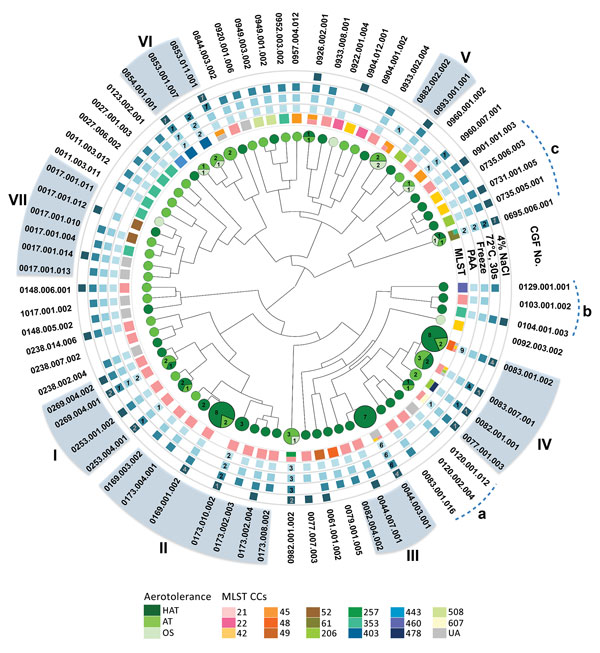Volume 24, Number 6—June 2018
Research
Frequent Implication of Multistress-Tolerant Campylobacter jejuni in Human Infections
Figure 4

Figure 4. Clonal distribution of MST Campylobacter jejuni strains from human clinical cases of campylobacteriosis. The phylogenetic tree was generated from CGF40 profiles. Circles indicate aerotolerant strains, and squares indicate for stress-tolerant strains. A square without a number indicates all tested strains in the subtype were stress tolerant. Clades I–VII were identified on the basis of the analysis criteria (90% similarity cutoff and >5 strains/clade). Additional clades that consisted predominantly of HAT strains, but did not meet the criteria, were named a, b, and c. AT, aerotolerant; CCs, clonal complexes; CGF, comparative genomic fingerprinting; HAT, hyperaerotolerant; MLST, multilocus sequence typing; OS, oxygen sensitive; PAA, peracetic acid; UA, unassigned.